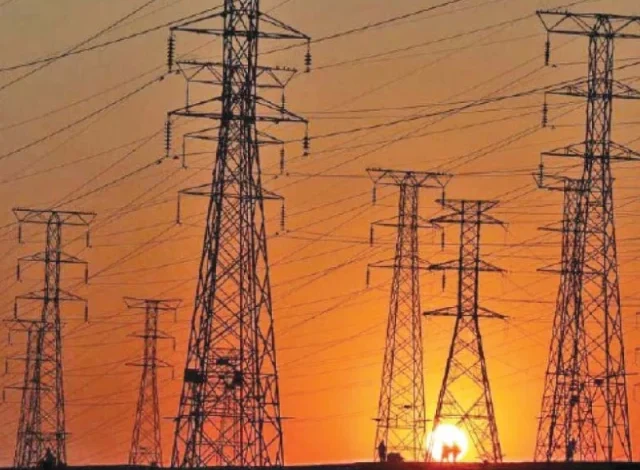MYT impact projected to be more than Rs300b

Alleging that it will enable K-Electric (KE) to collect approximately Rs300 billion from consumers, the Power Division has contested the regulator’s ruling on awarding a multiyear tariff (MYT).
“The total financial impact is in excess of Rs300 billion of the interventions identified for review by the government of Pakistan in the KE MYT,” the division said in a review petition sent in to the National Electric Power Regulatory Authority (Nepra).
It has ordered Nepra to review its most recent permission of electricity tariffs for KE, the primary power provider for Karachi. Starting financial year 2024-25, KE’s new tariffs will run through FY30.
The government thinks that Nepra has let various cost items and profit margins for KE that are greater or more beneficial than for any other utility in Pakistan, therefore driving needlessly high consumer prices and unnecessary strain on state funds.
The Power Division has expressed grave issues regarding KE’s privileged treatment. Setting KE’s fuel cost benchmark at Rs15.99 per kilowatt-hour (kWh), Nepra greatly exceeds the rates paid by other utilities buying power from the national grid. Shielding KE consumers from these expenses, this disparity adds Rs28 billion in FY24 and Rs13 billion in FY25 to the government budget.
KE likewise got a “recovery loss allowance,” even though its actual recoveries beyond the Nepra level. No other utility enjoys this privilege, which has generated Rs36 billion in FY24 and Rs35 billion in FY25 for KE, hence totalling over Rs200 billion in seven years.
Moreover, Nepra let KE a 24% markup on working capital—above any other utility—which increased income by Rs2.4 billion in FY24 and Rs15 billion over seven years. Higher distribution loss objective of 13.90% (versus KE’s own 13.46%) was also set, passing Rs3.1 billion in FY24 and Rs21 billion over the seven-year term on to consumers. KE was given a special 2% “law and order” margin even though the security situation improved. Over seven years, this adds Rs99 billion and Rs14 billion in FY24. KE was also let keep “other income” from investments and fines, which ought to have covered customer expenses.
Transmission losses were overestimated at 1.30% (vs actual around 0.75%), and KE keeps 75% of savings, creating inefficiency and costing Rs4 billion in FY24 and Rs28 billion over the seven-year period.
Extra returns were also allowed. KE enjoys a 12% return on equity (RoE) in US dollar (around 24.46% in Pakistani rupee) on generation, compared to National Transmission and Despatch Company’s (NTDC) 15% in rupees, and 14% RoE in US dollar (around 29.68% in PKR) on distribution, far exceeding the 14.47% RoE in rupees for others like the Faisalabad Electric Supply Company (Fesco).
Idle KE power plants still receive capacity payments, costing Rs12.7 billion in FY25 and Rs82.5 billion overall. Further taxing budgets are generous inflation indexation and a 17% RoE for these plants.
The Power Division urged Nepra to align KE’s tariff structure with national standards to ensure fairness, transparency and affordability, stressing the need to eliminate unjustified allowances and ensure equal treatment for all utilities.
KE looks at DISCO acquisitions
K-Electric held a corporate analyst briefing on Monday to provide insights into its recently approved tariffs and operational updates. The company expressed openness to acquiring other DISCOs (distribution companies), should the privatisation process move forward, according to Arif Habib Limited.
Its management highlighted that KE’s total generation capacity currently stands at 2,397 megawatts (MW) from internal sources, while it procures over 1,600 MW externally. With the anticipated completion of NTDC interconnection projects, an additional 400 MW is expected to be integrated into its grid.
The utility’s robust transmission network now comprises 7,095 MVAs capacity, 74 grid stations and 1,394 km of lines, while its distribution infrastructure includes 8,964 MVAs capacity, 2,112 feeders and over 31,000 pole-mounted transformers (PMTs).
Since its privatisation in 2005, KE has added 1,957 MW to its generation capacity, improved efficiency from 30% to nearly 46%, doubled transmission capacity and cut transmission and distribution (T&D) losses from 34.2% to 16%.
The utility estimates a cumulative saving of Rs900 billion for the government and consumers, alongside annual fiscal savings of Rs164 billion due to lower aggregate technical and commercial (AT&C) losses. Nepra has approved a multi-year tariff (MYT) structure of Rs39.98/kWh for KE, lower than the utility’s request for Rs44/kWh. Return on equity (RoE) has been set at 14% for generation/distribution and 12% for transmission, with a 70:30 D/E ratio. The cost of local and foreign debt has been capped at Karachi Interbank Offered Rate (Kibor) + 2% and Secured Overnight Financing Rate (SOFR) + 4.5%, respectively.